NICOTINE SULFATE
Synonym(s):(−)-1-Methyl-2-(3-pyridyl)pyrrolidine
- CAS NO.:65-30-5
- Empirical Formula: C20H30N4O4S
- Molecular Weight: 422.54
- MDL number: MFCD00148918
- EINECS: 200-606-7
- SAFETY DATA SHEET (SDS)
- Update Date: 2024-12-18 14:15:32
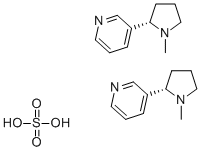
What is NICOTINE SULFATE?
Chemical properties
crystals
Chemical properties
Nicotine sulfate is a white crystalline solid.
The Uses of NICOTINE SULFATE
(-)-Nicotine Hemisulfate Salt is a prototype nicotinic acetylcholine receptor agonist.
What are the applications of Application
(?)-Nicotine hemisulfate salt is a prototype AChR (nicotinic acetylcholine receptor) agonist
General Description
An clear colorless aqueous solution. Toxic by inhalation and may be toxic by skin absorption. Produces toxic oxides of nitrogen during combustion.
Air & Water Reactions
Soluble in water.
Reactivity Profile
NICOTINE SULFATE arises from the neutralization of nicotine with sulfuric acid. Emits very toxic fumes of carbon monoxide and oxides of nitrogen when heated to decomposition [Lewis, 3rd ed., 1993, p. 919]. May react exothermically with strong oxidizing agents and strong reducing agents.
Health Hazard
Highly toxic, may be fatal if inhaled, swallowed or absorbed through skin. Avoid any skin contact. Effects of contact or inhalation may be delayed. Fire may produce irritating, corrosive and/or toxic gases. Runoff from fire control or dilution water may be corrosive and/or toxic and cause pollution.
Fire Hazard
Non-combustible, substance itself does not burn but may decompose upon heating to produce corrosive and/or toxic fumes. Containers may explode when heated. Runoff may pollute waterways.
Agricultural Uses
Insecticide, Miticide, Veterinary medicine: Nicotine sulphate is an insecticide of plant origin and is effective against a wide variety of insect pests. It is also used in veterinary medicine as an anthelmintic and external parasiticide. It is used to kill aphids, thrips, bugs, worms, leaf-hoppers and similar sucking insects which attack and destroy fruit, vegetables, crops and even flowers. It is also effective against lice, mites, and ticks. No longer registered in the U.S. or in European countries. There are more than 20 global suppliers[97
Safety Profile
Poison by ingestion and skin contact. When heated to decomposition it emits very toxic fumes of SOx and organic fumes. See also NICOTINE and SULFATES.
Potential Exposure
Nicotine sulfate is used as an insecticide and in veterinary medicine as an anthelmintic and external parasiticide. An alkaloid produced from tobacco.
Shipping
UN1658 Nicotine sulfate solution, Hazard Class: 6.1; Labels: 6.1-Poisonous materials.
Incompatibilities
Incompatible with oxidizers (chlorates, nitrates, peroxides, permanganates, perchlorates, chlorine, bromine, fluorine, etc.); contact may cause fires or explosions. Keep away from alkaline materials, strong bases, strong acids, oxoacids, epoxides.
Waste Disposal
In accordance with 40CFR165, follow recommendations for the disposal of pesticides and pesticide containers. Must be disposed properly by following package label directions or by contacting your local or federal environmental control agency, or by contacting your regional EPA office.
Properties of NICOTINE SULFATE
| alpha | D20 +88° (p = 70) |
| Density | 1.22 |
| color | brown |
| Merck | 6524 |
| Stability: | Stable. Incompatible with strong oxidisers. Flammable. |
| CAS DataBase Reference | 65-30-5(CAS DataBase Reference) |
| EPA Substance Registry System | Nicotine sulfate (65-30-5) |
Safety information for NICOTINE SULFATE
| Signal word | Danger |
| Pictogram(s) |
 Skull and Crossbones Acute Toxicity GHS06  Environment GHS09 |
| GHS Hazard Statements |
H301:Acute toxicity,oral H411:Hazardous to the aquatic environment, long-term hazard |
| Precautionary Statement Codes |
P260:Do not breathe dust/fume/gas/mist/vapours/spray. P262:Do not get in eyes, on skin, or on clothing. P273:Avoid release to the environment. P280:Wear protective gloves/protective clothing/eye protection/face protection. |
Computed Descriptors for NICOTINE SULFATE
NICOTINE SULFATE manufacturer
New Products
Indole Methyl Resin tert-butyl 9-methoxy-3-azaspiro[5.5]undecane-3-carboxylate Boc-His(Boc)-OH 2-CTC Resin 4-Chloro-7-tosy1-7Hpyrrolo[2,3-d]pyrimidine 5,7-Dibromo-1H-indole 2,5-dichloro-N-hydroxy-4,6-dimethylpyridine-3-carboximidamide 2,2-Dimethoxy-7-azaspiro[3.5]nonane hydrochloride 4-chloromethyl-5-methyl-1,3-dioxol-2-one (DMDO-Cl) R-2-BENZYLOXY PROPIONIC ACID 1,1’-CARBONYLDIIMIDAZOLE 1,1’-CARBONYLDI (1,2-4 TRIAZOLE) N-METHYL INDAZOLE-3-CARBOXYLIC ACID 4-((2-hydroxyethyl)thio)benzoic acid 1-(TERT-BUTOXYCARBONYL)-2-PYRROLIDINONE Methyl 6-methylnicotinate 3-Pyridineacrylic acid tert-Butyl carbazate TETRAHYDRO-2H-PYRAN-3-OL 2-((4-morpholinophenylamino) (methylthio) methylene) malononitrile 3-(4-morpholinophenylamino)-5-amino-1H-pyrazole-4-carbonitrile 2,4-dihydroxybenzaldehyde 1,3-Diethyl-1,3-Diphenylurea Methyl 2-methylquinoline-6-carboxylateRelated products of tetrahydrofuran
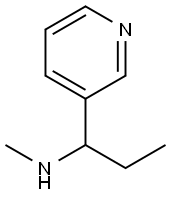

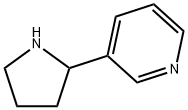

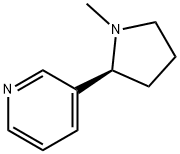
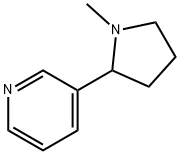

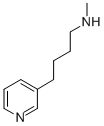
You may like
-
 (−)-Nicotine hemisulfate salt CAS 65-30-5View Details
(−)-Nicotine hemisulfate salt CAS 65-30-5View Details
65-30-5 -
 Pyridine 99.5% HPLC /UV SpectroscopyView Details
Pyridine 99.5% HPLC /UV SpectroscopyView Details
110-86-1 -
 Guanine , 99%View Details
Guanine , 99%View Details
73-40-5 -
 Piperazine Spot supply, best priceView Details
Piperazine Spot supply, best priceView Details
110-85-0 -
 Dibutyl PhthalateView Details
Dibutyl PhthalateView Details
84-74-2 -
 Imidazole Spot supply, competitive priceView Details
Imidazole Spot supply, competitive priceView Details
288-32-4 -
 Octadecyl 3-(3,5-di-tert-butyl-4-hydroxyphenyl)propionate 98% (GC)View Details
Octadecyl 3-(3,5-di-tert-butyl-4-hydroxyphenyl)propionate 98% (GC)View Details
2082-79-3 -
 Thiourea 99% ARView Details
Thiourea 99% ARView Details
62-56-6
